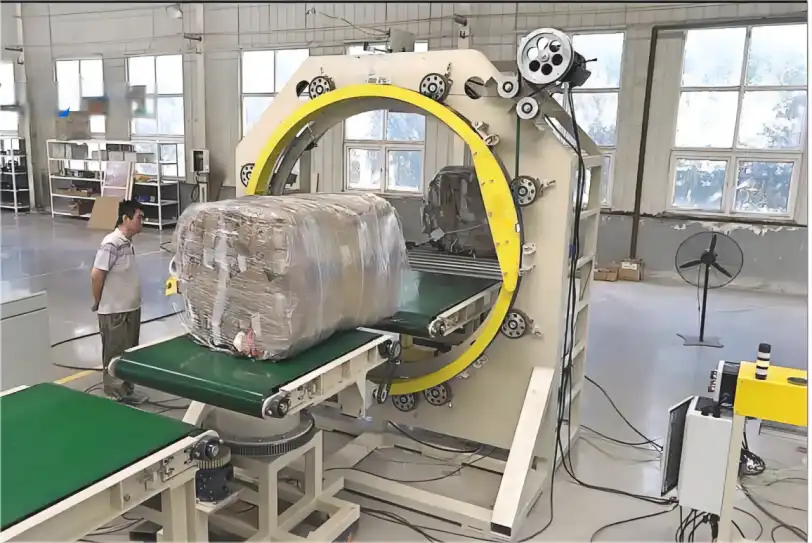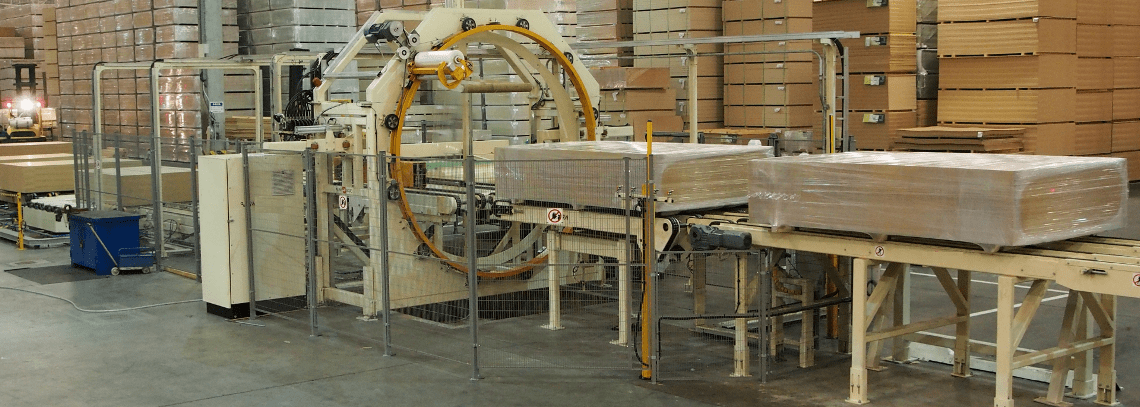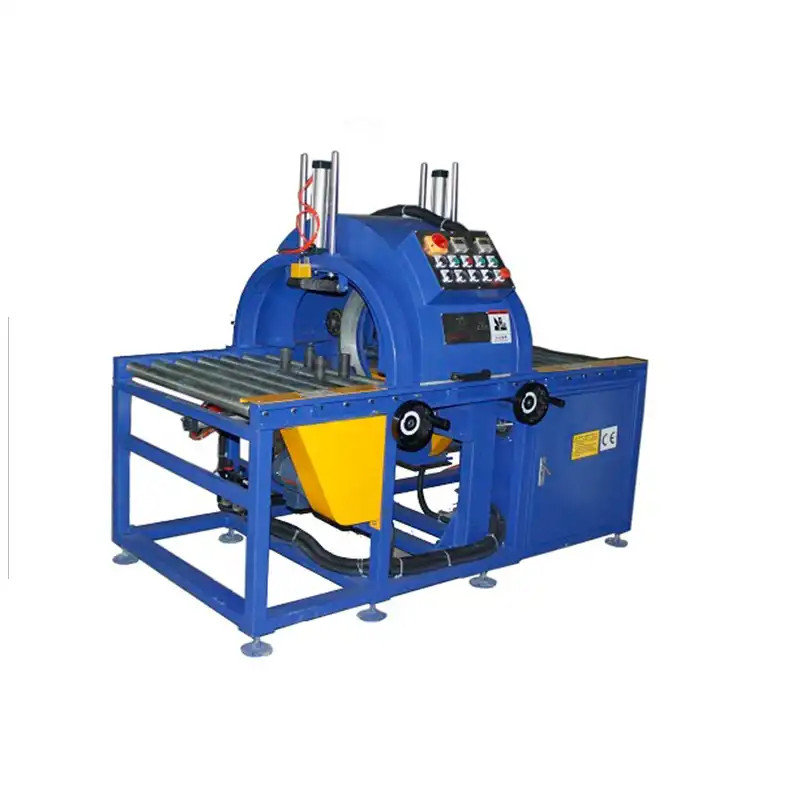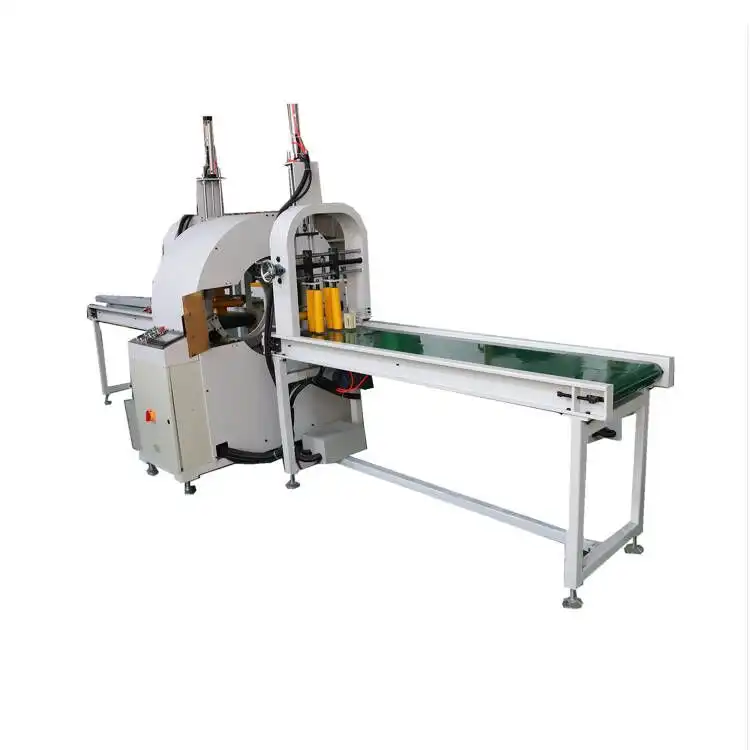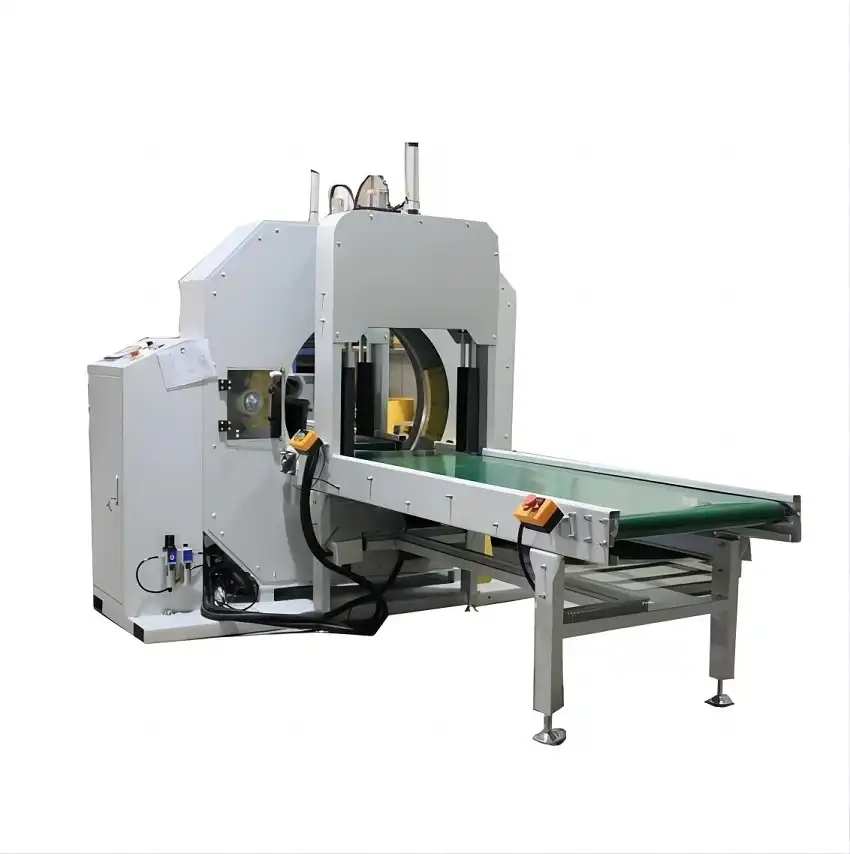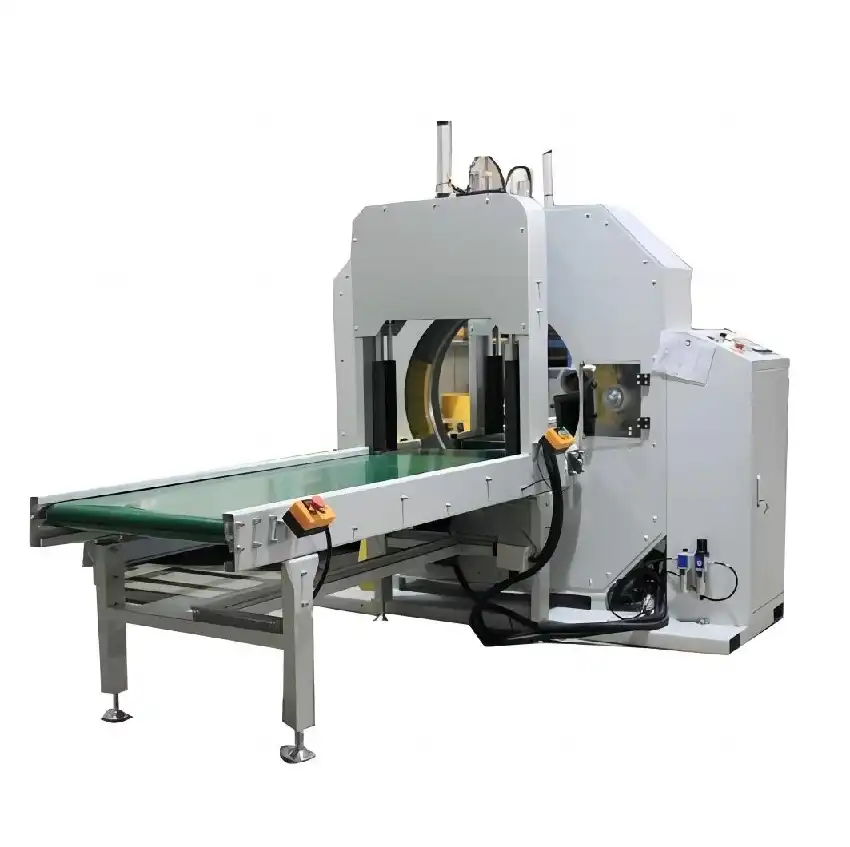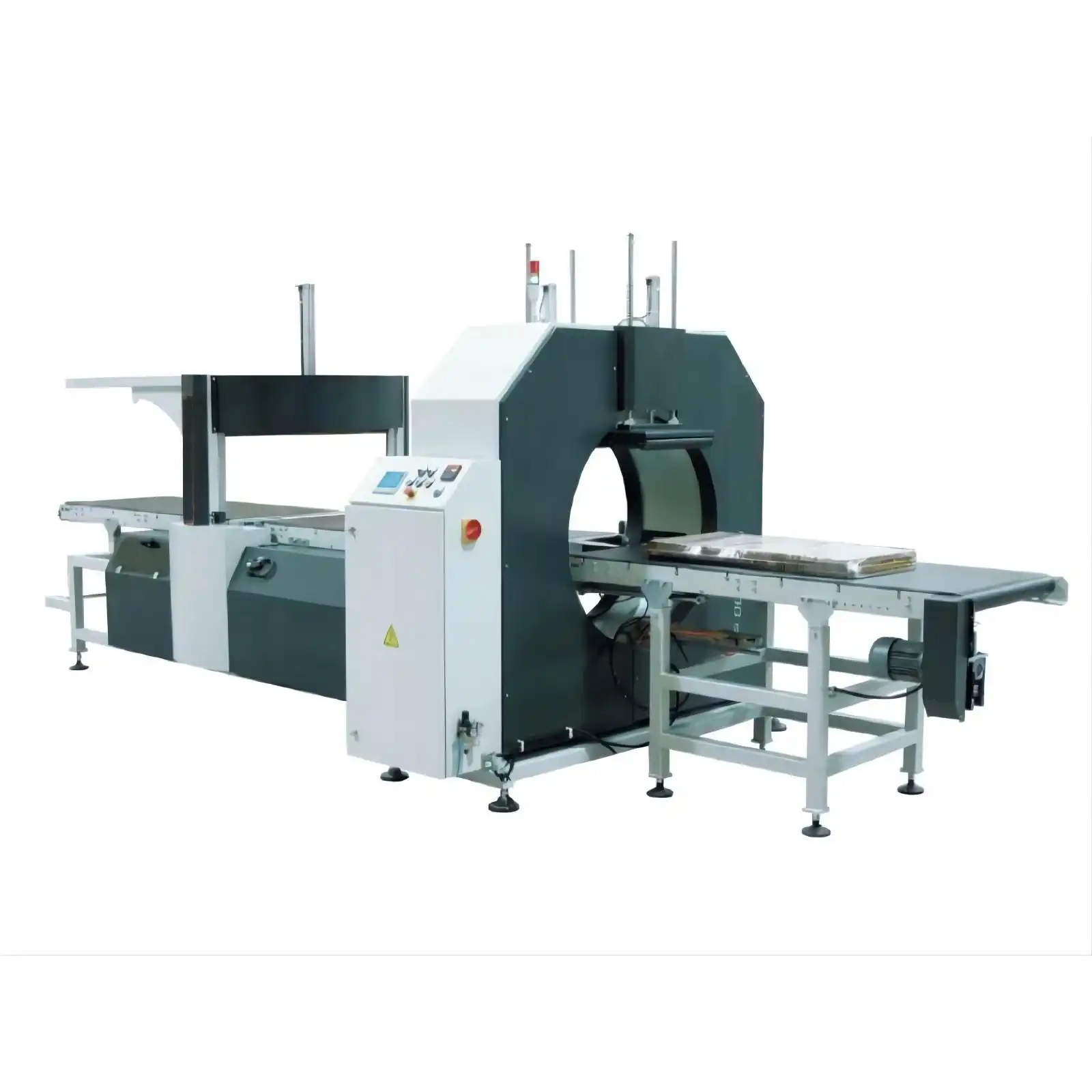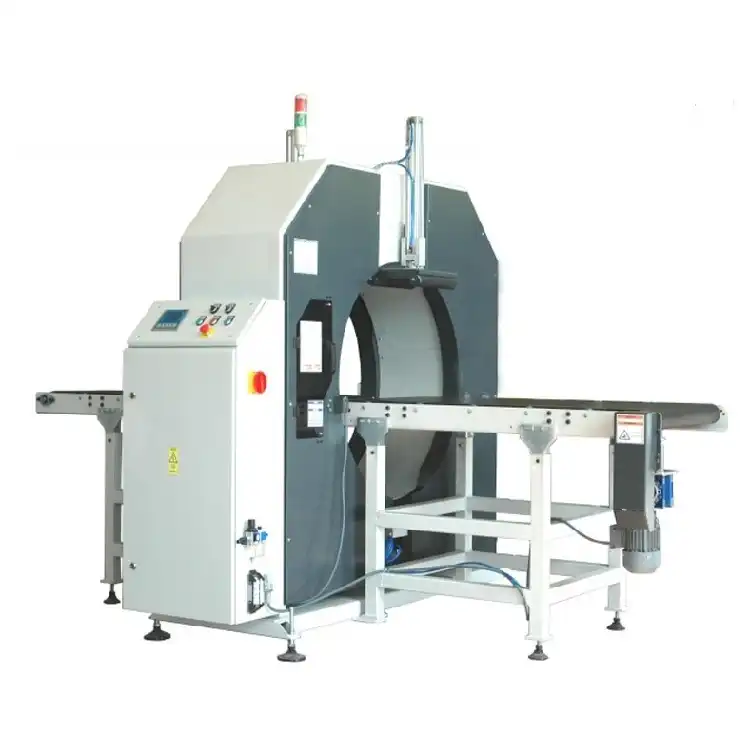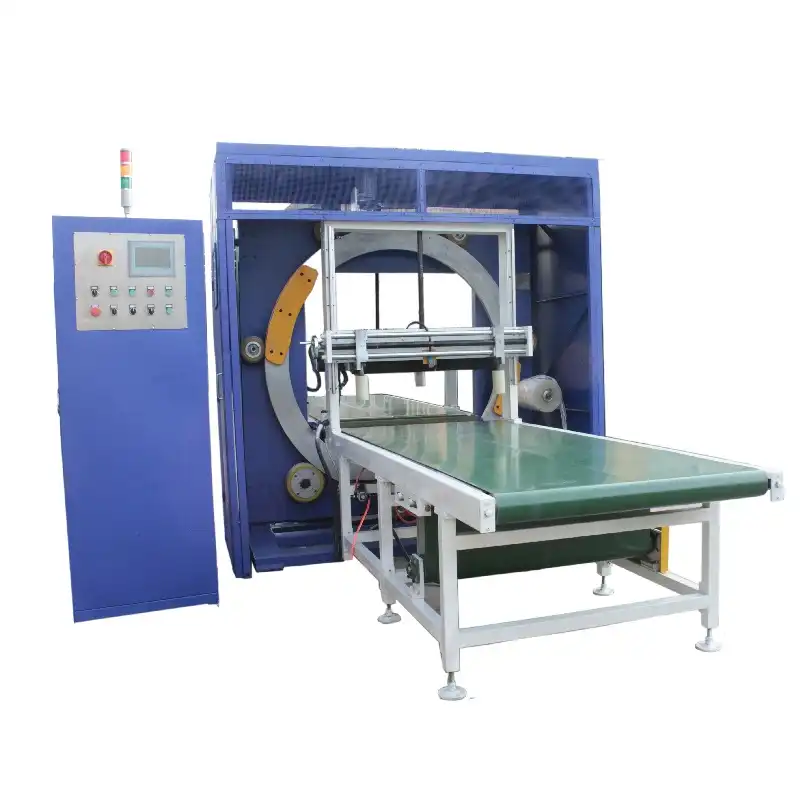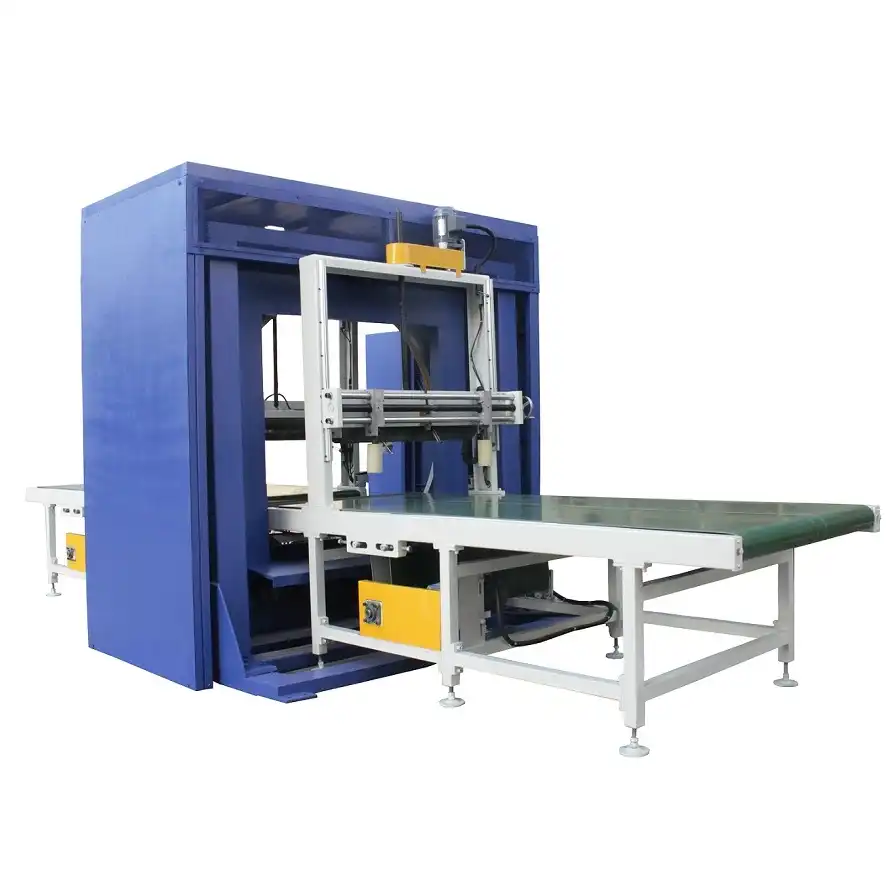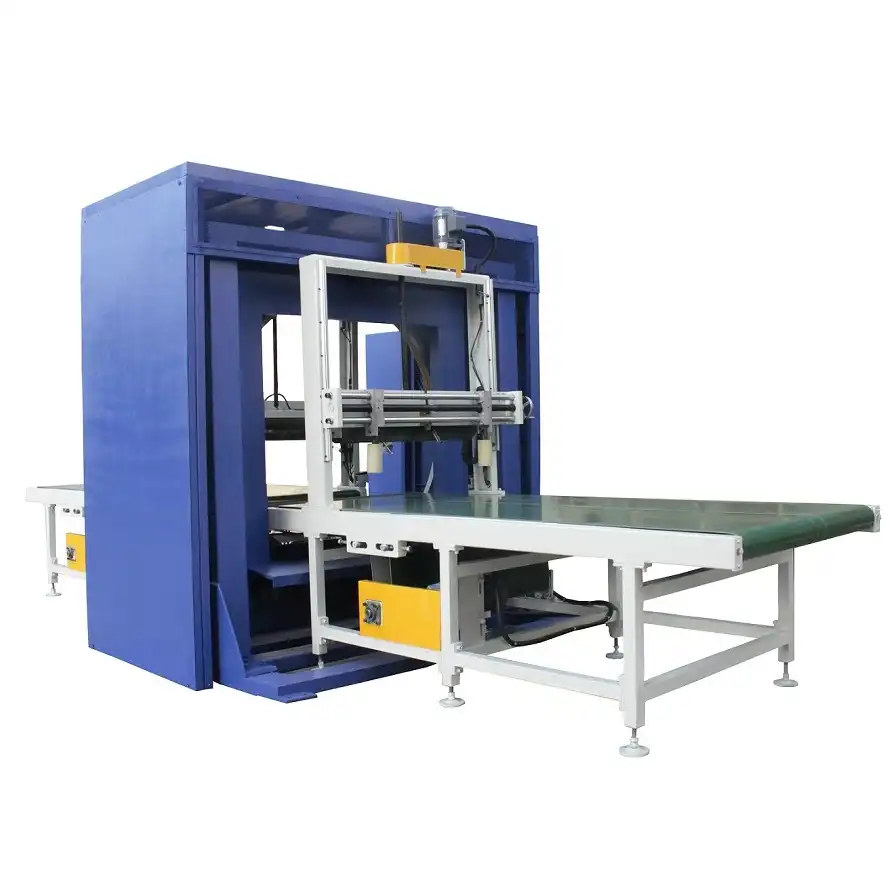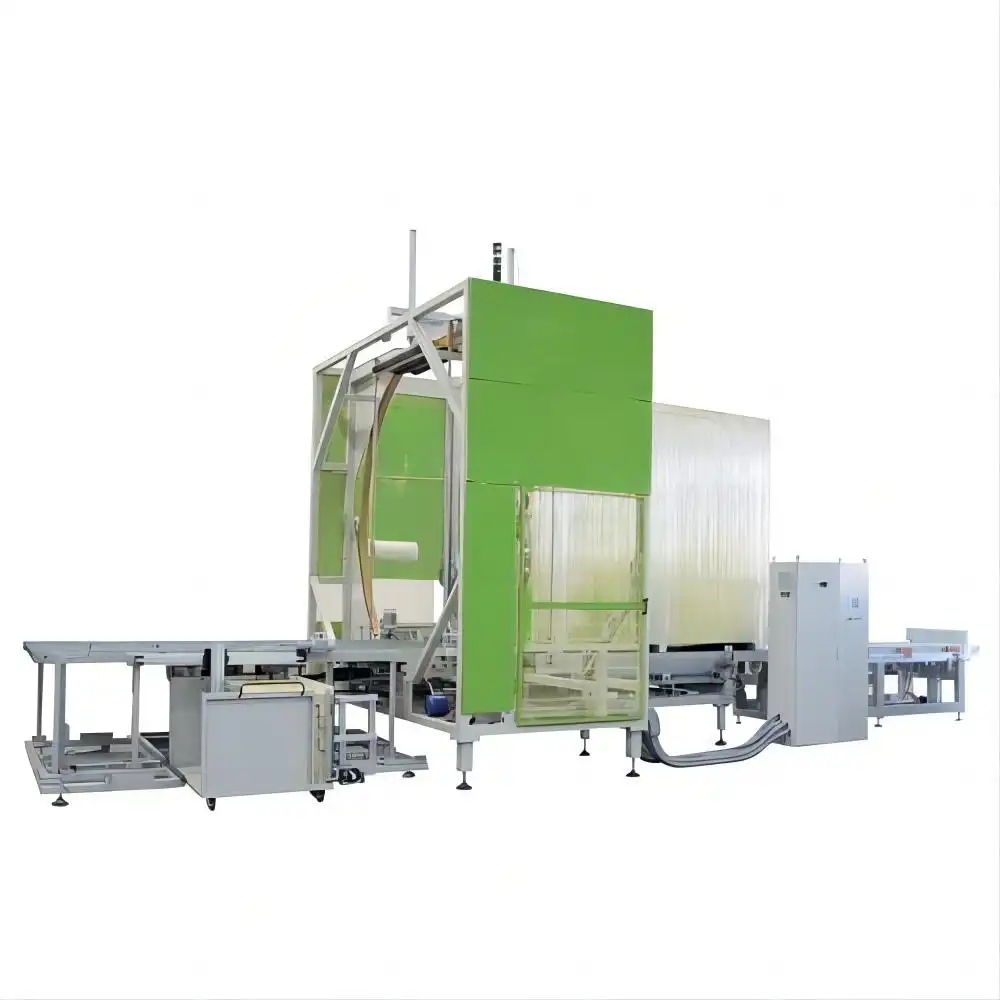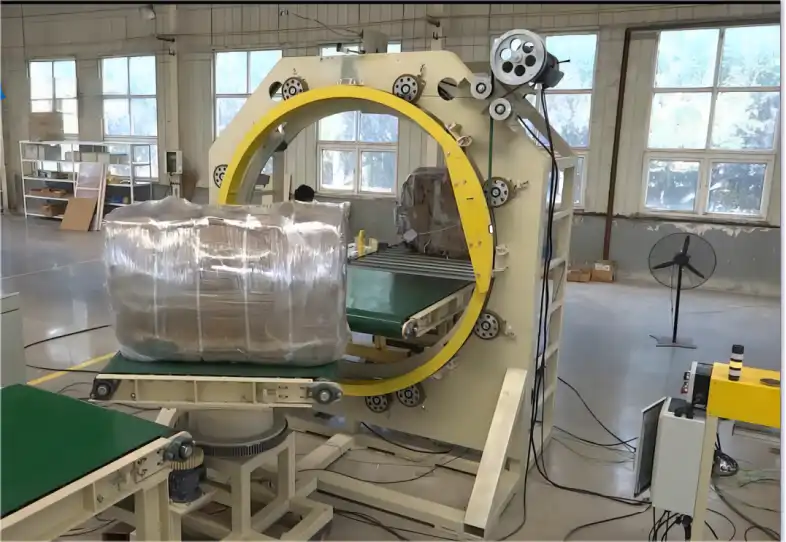Spiral Stretch Wrapper for Efficient Product Handling: Implementation Phase Guidelines
In today’s fast-paced industrial environments, improving product handling efficiency is critical to maintaining competitive advantages. One of the best ways to optimize packaging processes and boost efficiency is by implementing a spiral stretch wrapper. These machines play a pivotal role in securing loads during transit, ensuring products are tightly wrapped and protected from potential damage.
However, the successful implementation of a spiral stretch wrapper requires a structured approach. From selecting the right machine to ensuring proper integration into existing operations, the implementation phase is critical to achieving the full benefits of this equipment. In this article, we’ll provide step-by-step guidelines for the implementation phase, ensuring you maximize efficiency and performance from your spiral stretch wrapper.
1. Understanding the Benefits of a Spiral Stretch Wrapper
Before diving into the implementation phase, it's essential to understand why investing in a spiral stretch wrapper is so advantageous for businesses, especially in industries that handle large, irregular, or heavy items.
-
Increased efficiency: A spiral stretch wrapper automates the packaging process, significantly reducing the manual labor involved in wrapping pallets or bulky items. This leads to quicker turnaround times and streamlined production workflows.
-
Enhanced load security: The spiral wrapping technique ensures a tight and secure wrap, which minimizes the risk of product damage during transit or storage.
-
Cost reduction: By using stretch film efficiently, these machines help reduce material costs, ensuring you get the most out of each roll of wrapping film.
-
Consistency and reliability: Manual wrapping often results in uneven tension or loose wraps. A spiral stretch wrapper ensures consistent application of stretch film, resulting in uniform and secure packaging every time.
Understanding these benefits helps justify the investment and provides a solid foundation for the implementation process.
2. Selecting the Right Spiral Stretch Wrapper for Your Operations
The first step in successfully implementing a spiral stretch wrapper is choosing the right model for your operation. Different businesses have unique packaging needs, and the machine you select should align with those requirements. Here are key factors to consider during the selection phase:
a) Product Dimensions and Load Type
Evaluate the types of products you handle. Are they large, heavy, or oddly shaped? The dimensions of your products will dictate the machine’s wrapping capabilities, such as the diameter and height of the wrapping area. Make sure the spiral stretch wrapper can accommodate the size and weight of your typical loads.
b) Throughput and Speed Requirements
How many loads do you need to wrap per hour or per shift? Machines are rated for different levels of throughput, so ensure that the model you choose can keep up with your production demands without causing bottlenecks. High-speed machines may be required for large-scale operations, while a medium-speed machine could suffice for smaller or moderate workflows.
c) Film Usage and Cost Efficiency
Consider whether the machine comes with pre-stretch technology, which stretches the film before applying it to the load. Pre-stretching can save up to 50% on film costs, making it an essential feature for businesses aiming to reduce long-term expenses.
d) Automation Level
Spiral stretch wrappers come in semi-automatic and fully automatic models. Semi-automatic machines require operator intervention to load the pallet and start the wrapping process, while fully automatic machines can handle everything, from loading the pallet to applying the film and discharging the wrapped load. Your choice will depend on labor availability and the degree of automation your facility requires.
Selecting the right machine will set the tone for the entire implementation phase and ensure smooth integration into your operations.
3. Preparing Your Facility for Installation
Once you've chosen the right spiral stretch wrapper, the next step is preparing your facility for the machine's installation. Proper preparation minimizes disruptions and helps your team transition smoothly to using the new equipment.
a) Assess Available Space
The first thing to consider is the space available for the machine. Spiral stretch wrappers can take up significant floor space, and you need to ensure there’s enough room for the machine, the operators, and any incoming or outgoing materials. Ensure that the installation area allows for efficient material flow without obstructing other processes in your warehouse.
b) Electrical and Safety Requirements
Most spiral stretch wrappers require a dedicated electrical connection, so it’s important to verify that your facility meets the power specifications of the machine. Additionally, ensuring that safety measures are in place—such as emergency stop buttons, proper grounding, and guarding around moving parts—can help reduce the risk of accidents during operation.
c) Integrating with Existing Systems
If your warehouse uses other automated systems, such as conveyor belts or palletizers, make sure the spiral stretch wrapper can be easily integrated. Some models are designed with input/output connections to link directly with other equipment, allowing for a seamless transition from one stage of the packaging process to another.
By taking these steps, you can ensure that your facility is ready for the new machine and minimize the risk of delays during installation.
4. Training Your Team for Optimal Machine Use
Even the best spiral stretch wrapper will only be as effective as the people who use it. Operator training is a critical part of the implementation phase, as it ensures that your team knows how to use the machine properly and safely. Proper training will also help you get the most out of your investment by minimizing downtime and preventing errors.
a) Understanding the Machine's Functions
Make sure your team is familiar with all the machine’s controls, including starting and stopping the machine, adjusting the wrapping tension, and selecting the correct wrapping cycle. Depending on the complexity of the machine, you may need to conduct multiple training sessions to cover all aspects of its operation.
b) Safety Protocols
Given the size and power of spiral stretch wrappers, it's essential to train your team on all safety protocols. This includes understanding how to safely load and unload pallets, when to use the machine's emergency stop, and how to perform basic troubleshooting if something goes wrong.
c) Maintenance Training
Proper maintenance is essential for keeping your machine running smoothly. Train your team on how to perform basic maintenance tasks, such as cleaning sensors, replacing film, and lubricating moving parts. Additionally, establish a maintenance schedule to prevent issues that could lead to costly repairs or downtime.
When your team is confident in using the machine, you'll see increased productivity and fewer operational disruptions.
5. Establishing a Maintenance and Support Plan
Regular maintenance is critical to ensuring the longevity and efficiency of your spiral stretch wrapper. Developing a proactive maintenance plan can help prevent downtime and costly repairs.
a) Routine Maintenance Tasks
Routine maintenance tasks include inspecting parts for wear, cleaning sensors, and ensuring that the film tension and pre-stretch mechanisms are working correctly. By performing these tasks regularly, you can catch small issues before they turn into larger problems.
b) Scheduling Preventive Maintenance
Work with the machine’s manufacturer or service provider to schedule preventive maintenance. This might include more in-depth inspections, replacement of worn parts, and recalibration of the machine. Preventive maintenance ensures that your spiral stretch wrapper operates at peak performance and helps avoid unexpected breakdowns.
c) Access to Spare Parts
Having access to spare parts can significantly reduce downtime if something goes wrong. Make sure you either stock essential replacement parts or work with a supplier that can deliver parts quickly when needed.
A well-executed maintenance plan ensures that your machine operates efficiently, reducing the risk of unexpected failures that could disrupt your operations.
6. Monitoring Performance and Optimizing Operations
After the spiral stretch wrapper is installed and your team is trained, it’s essential to monitor the machine’s performance over time. Tracking key metrics, such as throughput, downtime, and film usage, will give you insights into how well the machine is performing and whether any adjustments are needed.
a) Data Collection and Analysis
Many modern spiral stretch wrappers come with digital interfaces or sensors that can track machine performance. By collecting this data, you can identify trends, spot inefficiencies, and make data-driven decisions to improve performance.
b) Continuous Improvement
The implementation phase doesn’t end when the machine is installed. By continuously monitoring performance and optimizing operations, you can ensure that the machine continues to deliver maximum efficiency. This might involve fine-tuning wrapping cycles, adjusting film tension, or exploring new ways to integrate the machine with other packaging equipment.
Conclusion
Implementing a spiral stretch wrapper is a smart move for businesses looking to improve their product handling and packaging efficiency. By carefully selecting the right machine, preparing your facility, training your team, and establishing a solid maintenance plan, you can ensure a smooth and successful implementation.
With proper implementation, a spiral stretch wrapper will not only enhance your packaging process but also lead to cost savings, increased productivity, and reduced downtime. By following the guidelines outlined in this article, you’ll set your operation up for long-term success, optimizing both performance and efficiency in your packaging operations.
